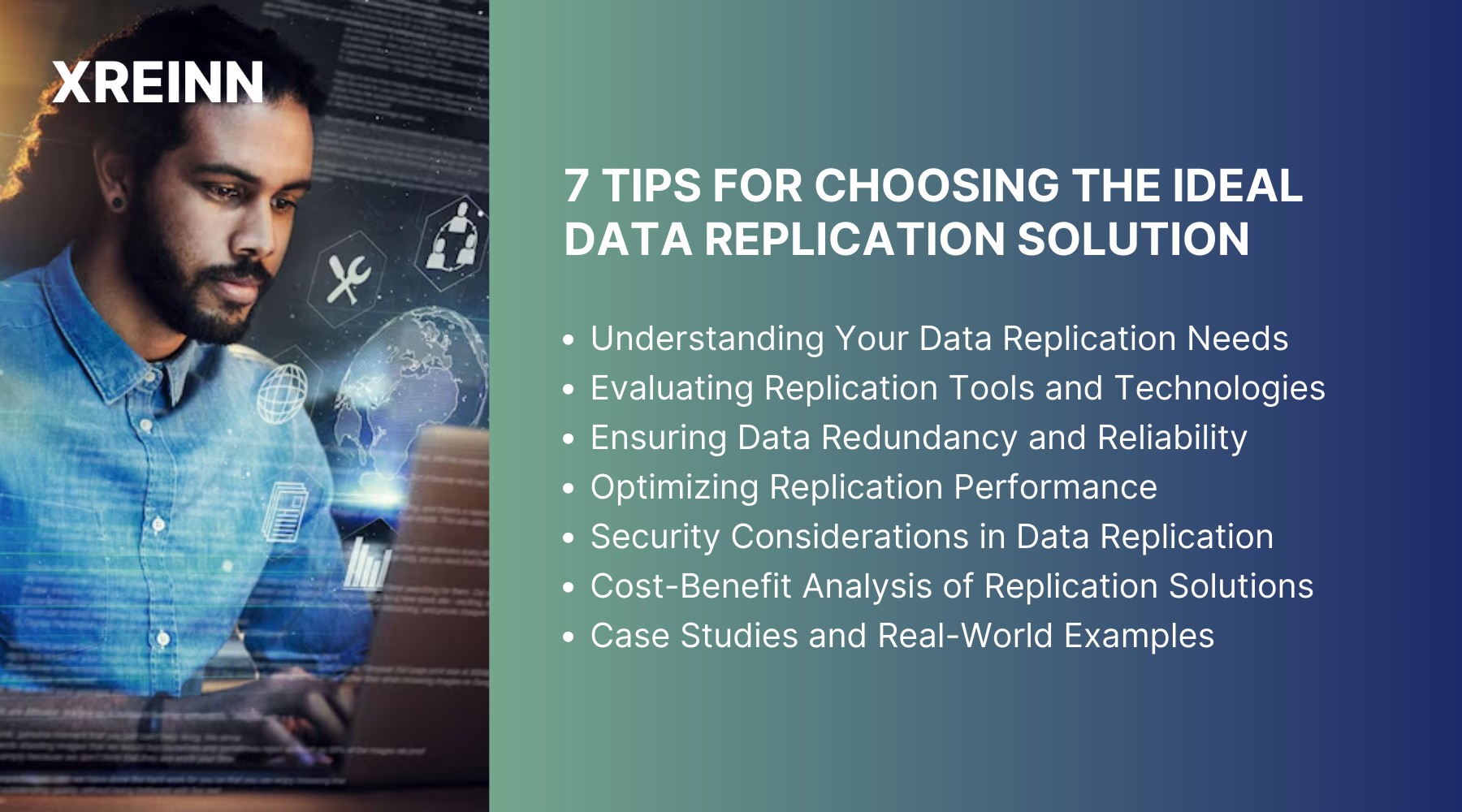Data Integration
Top 7 Tips for Selecting the Ideal Data Replication Solution
Jul 22, 2024
Ensuring seamless operations and powerful disaster recovery depends on effective data replication. Selecting the right solution is not just about avoiding data loss; it's about optimizing performance and scalability. Advanced replication tools offer you varying features and capabilities, requiring a thorough evaluation.
Factors like real-time synchronization, consistency, and system integration impact your current infrastructure and future-proof your enterprise against evolving challenges.
In this guide, we'll explore expert strategies and provide practical insights to help you select the ideal data replication solution, ensuring your enterprise's data remains secure, accessible, and efficiently managed.
7 Tips for Choosing the Ideal Data Replication Solution

1. Understanding Your Data Replication Needs
First, you need to assess your data replication requirements thoroughly. Consider the important factors that drive your need for replication: business continuity, disaster recovery, data distribution, and load balancing.
Advanced users must differentiate between various replication types—real-time, near-real-time, and batch replication. Each type has specific use cases and implications for your infrastructure.
To understand how these types fit into your system, conduct a detailed analysis of your current data architecture. Evaluate your database management systems (DBMS), storage solutions, and network infrastructure. Scalability should be a top priority—your chosen solution must handle increasing data volumes without compromising performance.
2. Evaluating Replication Tools and Technologies
When evaluating replication tools, it's essential to compare their advanced features and capabilities. Look beyond basic functionalities and focus on performance metrics like latency, throughput, and data consistency. Tools like Oracle GoldenGate, Microsoft SQL Server Replication, and AWS Database Migration Service offer the best features for your different needs.
Integration ease is another important factor. Ensure the replication software you choose can seamlessly integrate with your existing systems. Vendor support and community backing can also influence your decision. A checklist for compatibility is invaluable: consider the operating system, database compatibility, and network infrastructure.
3. Ensuring Data Redundancy and Reliability
Implementing effective data redundancy strategies is more important for disaster recovery. Data redundancy ensures that multiple copies of data exist across different locations, mitigating the risk of data loss. Use the replication software mentioned above to create redundant data sets and ensure these copies are regularly updated and synchronized.
Maintain data integrity and consistency during replication by employing techniques such as transactional replication and conflict resolution mechanisms. These techniques help in preserving data accuracy across all replicated sets, even during high-transaction periods.
4. Optimizing Replication Performance
Optimizing replication performance involves several advanced techniques. Start with load balancing to distribute data evenly across multiple servers, reducing the risk of bottlenecks. Network optimization is equally critical - use high-speed, low-latency networks to facilitate rapid data transfer.
Compression and deduplication can significantly improve replication efficiency. Compression reduces the amount of data transferred, while deduplication eliminates redundant data, conserving bandwidth and storage. Regularly monitor replication performance using advanced tools and promptly address any bottlenecks or performance issues.
5. Security Considerations in Data Replication
Security is more important in data replication, given the sensitive nature of the data involved. Protect replicated data with powerful encryption methods, both in transit and at rest. Implement strict access controls to ensure that only authorized personnel can access the data.
Audit trails and logging are essential for tracking data access and modifications. These measures help in identifying and responding to unauthorized access attempts. Ensure your replication practices comply with industry standards and regulations like GDPR, HIPAA, or PCI DSS.
6. Cost-Benefit Analysis of Replication Solutions
Conducting a cost-benefit analysis is also important to justify the investment in replication solutions. Consider the direct costs, such as licensing fees, hardware requirements, and ongoing maintenance. However, don’t overlook hidden costs, including potential downtime and the need for skilled personnel to manage the system.
Evaluate the benefits in terms of improved data availability, improved disaster recovery capabilities, and operational efficiency. Present these benefits to stakeholders in a compelling way to secure the necessary investment.
7. Case Studies and Real-world Examples
Learning from real-world examples can provide valuable insights. Consider the case of a financial institution that implemented Oracle GoldenGate for real-time data replication across its global branches. The institution faced challenges like high latency and data inconsistency, but with careful planning and optimization, it achieved seamless data synchronization, enhancing its operational efficiency.
Conclusion
Selecting the ideal data replication solution requires a deep understanding of your needs, thorough evaluation of tools, and implementation of best practices for performance and security. By focusing on advanced strategies and learning from real-world examples, you can make the best decision that ensures data reliability and business continuity. With the right replication solution, you can find the complexities of modern data management and stay way ahead of your competition.

Data Analytics
Jun 27, 2024Master key concepts in data analytics with practical tips to enhance decision-making and achieve success in your projects and professional growth

Data Analytics
Jul 01, 2024Learn the essential stages of the data analytics workflow to turn your data into valuable business insights and drive growth.

